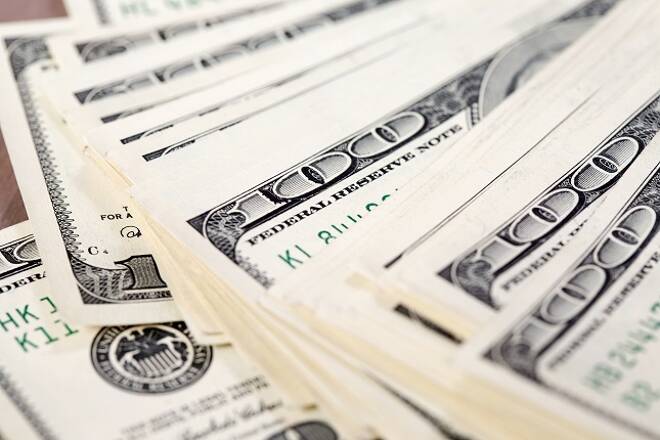Advertisement
Advertisement
U.S. Dollar Spikes to Multi-year High in Holiday-Shortened Week
By:
December U.S. Dollar Index futures spiked higher last week, reaching its highest level since 2003. It was a thinly traded holiday-shortened week so at
December U.S. Dollar Index futures spiked higher last week, reaching its highest level since 2003. It was a thinly traded holiday-shortened week so at times the price action wasn’t too convincing due to the lack of participation by the major banks and institutions. The Greenback posted its biggest gain against the Japanese Yen, while the commodity-linked Australian and New Zealand Dollars are able to recover some of their earlier losses.
The U.S. Dollar Index found support early in the week with the release of a better-than-expected U.S. Existing Home Sales report. Last month’s report was revised upward to 5.49 million units. This month’s report came in at 5.60 million units, higher than the 4.53 million unit estimate.
The market moving event was the U.S. Durable Goods Orders report. It showed a whopping 4.8% gain versus a 1.2% estimate. It also was much higher than last month’s revised -0.3%. The report showed new orders for U.S. manufactured capital goods rebounded in October, driven by rising demand for machinery and a range of other equipment. This indicates that investors should expect an acceleration in fourth quarter Gross Domestic Product.
Weekly Unemployment Claims came in at 251K, higher than the 241K estimate. This was also up from 233K the previous week. The report indicates the number of Americans filing for unemployment benefits rose from a 43-year low the week-ending November 18. It also showed the trend remains consistent with a tightening labor market.
According to the University of Michigan, Consumer Sentiment was 93.8, better than the 91.6 estimate and the previous month. The jump in consumer sentiment came after the election of Donald Trump as the next president. It also was an indication that consumers were accepting of Trump’s win, which they viewed as positive for their personal finances and the country’s economic growth.
The Fed meeting minutes also helped generate support for the U.S. Dollar because it indicated the policymakers appeared confident ahead of the election that the economy was strong enough to warrant an interest rate hike at the next FOMC meeting in December. This was really not a surprise for traders because a little more than a week ago, Fed Chair Janet Yellen told a Congressional Sub-Committee that a rate hike at this time would be “appropriate”.
Additionally, seventeen policymakers participated at the November policy meeting, of whom 10 had a vote. Among the wider group of participants, most said it “could well become appropriate “to raise rates “relatively soon,” according to the minutes.
In other news, Australian Construction Work Done came in at -4.9%, well below the -1.5% estimate. In New Zealand, the Trade Balance was -846M, better than the -950M estimate and the previous -1394M. In Japan, the Tokyo Core CPI report showed consumer inflation at -0.4%, unchanged from the previous read and in line with the estimate.
Related Articles
About the Author
James Hyerczykauthor
James is a Florida-based technical analyst, market researcher, educator and trader with 35+ years of experience. He is an expert in the area of patterns, price and time analysis as it applies to futures, Forex, and stocks.
Did you find this article useful?
Latest news and analysis
Advertisement
